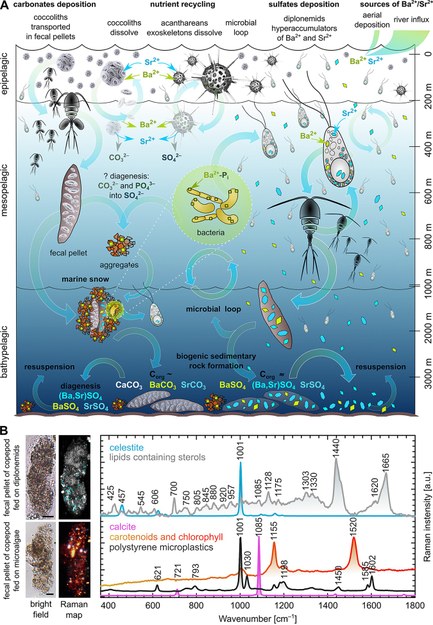24.10.2023
Diplonemids - newly found players in biogeochemical cycles of trace elements

Ing. Mgr. Jana Pilátová, Ph.D.
(PřF UK, MFF UK, BC AV ČR)
Join us online: meet.google.com/qhf-etyu-sna
Barium and strontium are often used as proxies of marine productivity in palaeoceanographic reconstructions of global climate. However, long-searched biological drivers for such correlations remain unknown. Here, we report that taxa within one of the most abundant groups of marine planktonic protists, diplonemids (Euglenozoa), are potent accumulators of intracellular barite (BaSO4), celestite (SrSO4), and strontiobarite (Ba,Sr)SO4. In culture, Namystinia karyoxenos accumulates Ba2+ and Sr2+ 42,000 and 10,000 times higher than the surrounding medium, forming barite and celestite representing 90% of the dry weight, the greatest concentration in biomass known to date. As heterotrophs, diplonemids are not restricted to the photic zone, and they are widespread in the oceans in astonishing abundance and diversity, as their distribution correlates with environmental particulate barite and celestite, prevailing in the mesopelagic zone. We found diplonemid predators, the filter-feeding zooplankton that produces fecal pellets containing the undigested celestite from diplonemids, facilitating its deposition on the seafloor. To the best of our knowledge, evidence for diplonemid biomineralization presents the strongest explanation for the occurrence of particulate barite and celestite in the marine environment. Both structures of the crystals and their variable chemical compositions found in diplonemids fit the properties of environmentally sampled particulate barite and celestite. We propose that diplonemids are potential players in Ba2+/Sr2+ cycling in the ocean and have possibly contributed to sedimentary rock formation over long geological periods. These organisms emerged during the Neoproterozoic era (590 to 900 million years ago), prior to known coccolithophore carbonate biomineralization (~200 million years ago). Finally, we propose that diplonemids, which emerged during the Neoproterozoic era, qualify as impactful players in Ba2+/Sr2+ cycling in the ocean that has possibly contributed to sedimentary rock formation over long geological periods.
CV of the speaker HERE.


Akce dokumentů